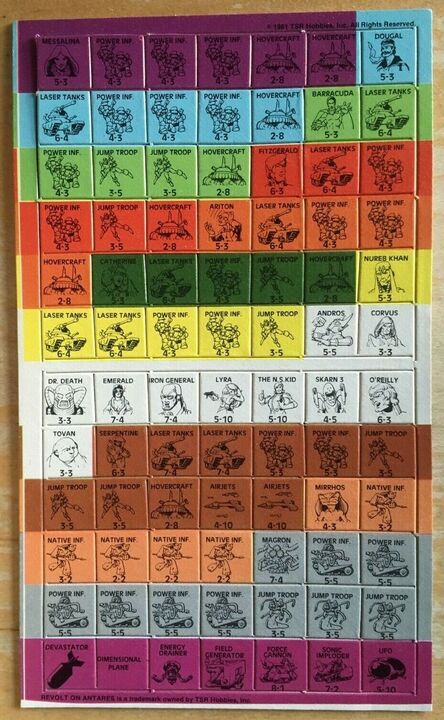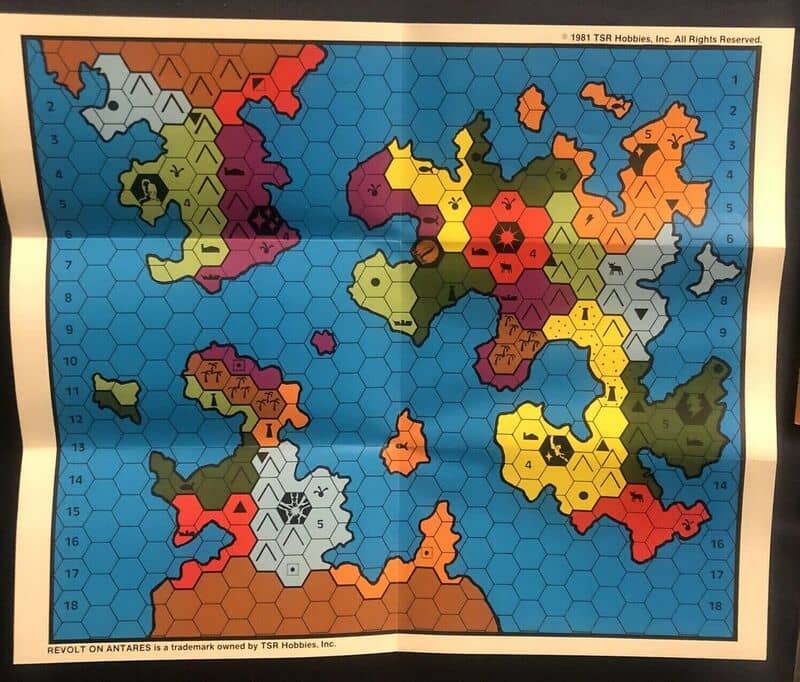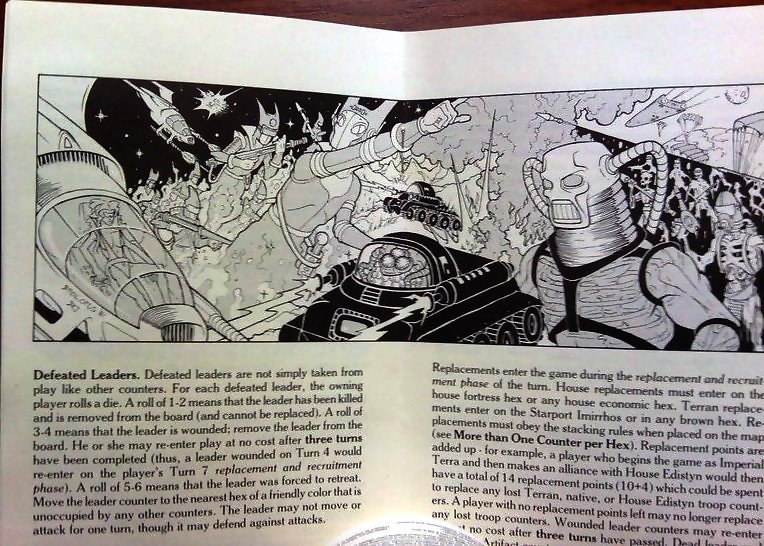Revolt on Antares: Small but Packed with Thrills… and Memories
The rulebook for Revolt on Antares
A couple of weeks ago here at Black Gate, I wrote about the 1983 tabletop roleplaying game Lords of Creation, created by the late Tom Moldvay. Unfortunately, while listing some of Mr. Moldvay’s works, I left out a small but important game, Revolt on Antares.
Published in 1981 by TSR, the producers of Dungeons & Dragons at that time, Revolt on Antares was a minigame, sometimes referred to as a microgame, which were popular at the time. Other minigames of the period included Vampyre and Viking Gods, both from TSR, and such games as Ogre and Car Wars, each produced by Steve Jackson Games. These were just a few of the minigames available back then, and for a time in the early ’80s minigames brought a fair amount of business for game publishers.
As for Revolt on Antares, it was a simple war game made for two to four players. The game took place on the planet of Imirrhos, also known by the name of Antares 9, the ninth planet in the Antares solar system. All that was needed for play was the short, simple rule book, the included map, and two six-sided dice, also included. Oh, and I can’t forget the cardboard playing pieces, referred to in the rule book as counters, especially as there were three types: troops, leaders, and artifacts.
The cardboard counter pieces for Revolt on Antares
There were three different scenarios of game play. One scenario allowed one player to act as a leader of a rebel force fighting against another player who acted is head of the Terran empire. Another scenario consisted of a war between the various royal houses of the planet, and here up to four players could take part. In the third scenario, an alien invasion took place with one player taking the role of the invaders while other players were the royal houses defending the planet.
Game play consisted of ten combat turns with each turn having nine different sequences of play. During their turn, players could move their cardboard gaming pieces across the map, or they could attack, hire Galactic Heroes, pick an ally, and bring in replacement troops. Each cardboard counter had two numbers on it, one being the piece’s combat factor and the other its movement factor, showing how much power the piece brought to a fight or how well it could move across the map. For combat, each side added up its number of combat factors and then rolled a dice, adding that dice roll, though Artifacts or Galactic Heroes or even royal house leaders could bring special abilities to affect a fight; the side with the highest combination of combat factors and their dice roll won the round.
The map
Terrain proved an important factor in combat, as not every game piece could move across water from one continent to another. Some troops could cross water, and other special pieces could carry troops across water. For instance, the Hovercraft could carry military pieces, while Jump Troops, Airjet Squadrons and some of the Galactic Heroes and Artifacts could cross water on their own.
I’ve compared Revolt on Antares to a more simple, futuristic form of RISK, and I think the comparison is apt. However, games of Revolt on Antares move a lot faster than RISK.
Yet despite being a relatively simple game, Revolt on Antares had plenty of special touches which made it unique, especially concerning the game’s background material. For instance, each of the royal houses had a leader, and these were quite the interesting characters. Such names as Black Dougal MacKenzie, Barracuda Kinrabe, and Nureb Khan Edistyn headed up the list of leaders. And then there were the Galactic Heroes, who included such characters as Corvus Andromeda, Doctor Death, and The Iron General. Plus, bringing a bit of surprise to the game map were the Artifacts, of which each royal house had one. Each Artifact was different from all the others and included such fantastic devices as The Devastator, The Energy Drainer, and The Sonic Imploder, my personal favorite being The UFO.
Revolt on Antares featured artwork from artists Erol Otus,
Jeff Dee, David S. LaForce, Jim Roslof, and Bill Willingham
Remembered fondly today by many old-school players, Revolt on Antares has become something of a collector’s piece, often selling for nearly a hundred U.S. dollars on various online sites. Is it worth it? Perhaps, especially to those of us who warmly recall it as a part of our childhood.
Ty Johnston is vice president of the Rogue Blades Foundation, a non-profit organization focused upon bringing heroic literature to all readers. A former newspaper editor, he is the author of several fantasy trilogies and novels, including City of Rogues and The God Sword.





A quintessential Tom Moldvay game, combining his broad experience with wargames with his SF and fantasy interests, which crossed over in the works of Poul Anderson.
Did you know Tom when you worked at TST, Lawrence?